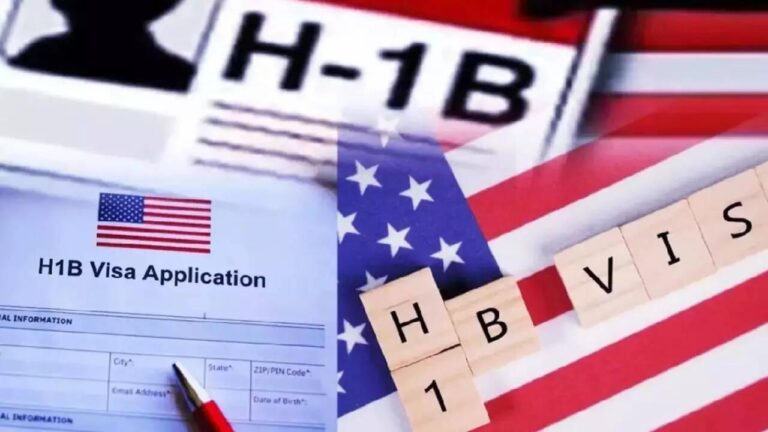India is ramping up efforts to attract back its top talent from the United States amid growing challenges posed by the US H-1B visa fee structure and immigration policies. As thousands of skilled Indian professionals grapple with increasing costs and uncertainties surrounding the H-1B visa-the primary route for tech workers in the US-India is actively positioning itself as a viable and competitive alternative. However, experts warn that persuading highly sought-after individuals to return home will require more than financial incentives, highlighting the complexities involved in reversing decades of brain drain. This article examines the dynamics at play as India seeks to reclaim its best minds from the US, navigating a landscape fraught with visa hurdles and evolving global talent demands.
H1B Visa Fee Surge Strains Indian Professionals’ US Dream
The recent surge in H-1B visa fees has created significant hurdles for Indian professionals aspiring to work in the US tech industry, intensifying the challenges around their professional dreams. The hike not only increases the financial burden on hopeful applicants but also impacts startups and mid-sized firms that rely heavily on global talent. Many candidates are now forced to reconsider their options, as the increased costs translate into fewer sponsorships and longer wait times, disrupting career trajectories and ambitions abroad.
India’s government is actively developing strategies to incentivize its diaspora to return home, aiming to transform these challenges into opportunities for domestic growth. Efforts include improving infrastructure, launching innovation hubs, and offering competitive incentives to stem the brain drain. However, the task is complicated by factors such as lucrative salaries, established professional networks, and lifestyle preferences abroad. Retaining top talent demands a multifaceted approach that balances economic reforms with nurturing a vibrant, globally competitive environment.
- Key challenges faced by Indian professionals impacted by fee surge:
- Increased visa application costs
- Reduced job sponsorship opportunities
- Heightened uncertainty during visa processing
| Stakeholder | Challenges | Potential Solutions |
|---|---|---|
| Indian Professionals | Rising costs, job security concerns | Career diversification, local entrepreneurship |
| US Employers | Higher recruitment expenses, talent shortage | Investing in talent development, offshoring |
| Indian Government | Brain drain, skill gap | Start-up incentives, improved research facilities |
India’s Strategic Push to Reverse Brain Drain Faces Complex Challenges
India’s ambition to reclaim its top talent currently residing in the United States confronts several entrenched hurdles, despite the government’s concerted efforts. The contentious hike in H-1B visa fees in the US has ignited hopes of a reverse migration, but the reality remains multilayered. Even with attractive incentives such as tax breaks, startup funding, and enhanced research infrastructure, many Indian professionals are hesitant to uproot established careers and networks. The allure of robust healthcare, educational opportunities for families, and perceived stability abroad continues to weigh heavily on decision-making.
Among the key complexities are:
- Career Growth Uncertainty: Indian companies often struggle to match the scale and diversity of roles available in American firms.
- Social and Cultural Integration: Returning professionals face reverse culture shock and challenges in adapting to local work environments.
- Infrastructure Limitations: Despite improvements, gaps in urban amenities and technological support persist.
| Factor | India | US |
|---|---|---|
| Average Annual Salary (Tech Sector) | $20,000 | $120,000 |
| Startup Funding Access | Moderate | High |
| Work Culture Flexibility | Increasing | Established |
| Healthcare Quality | Improving | High |
Policy Recommendations Focus on Incentives and Infrastructure Enhancement
India’s strategy to reclaim its diaspora of top-tier talent hinges largely on creating compelling incentives that offset the appeal of the US tech ecosystem. Experts argue that simply slashing H-1B visa fees or tweaking policies won’t suffice. Instead, a multipronged approach is needed-one that includes financial incentives such as tax breaks and startup grants, streamlined bureaucratic processes, and enhanced career opportunities in Indian-tech hubs. Crucially, the government is eyeing partnerships between academia, industry, and government bodies to foster innovation and make returning home a viable and attractive option for skilled professionals.
On the infrastructure front, efforts are underway to bolster physical and digital frameworks. Upgrades to high-speed internet access in tier-2 and tier-3 cities, creation of state-of-the-art research parks, and establishing global-standard incubation centers are seen as key pillars to support returnees’ entrepreneurial ambitions. According to recent data, investing in infrastructure could accelerate the retention rate of Indian talent by over 30% in the next five years:
| Infrastructure Investment | Expected Impact on Retention |
|---|---|
| High-Speed Internet Expansion | +15% |
| Research Parks Development | +10% |
| Incubators & Innovation Centers | +7% |
- Tax incentives tailored to returning tech workers and entrepreneurs
- Easier access to capital and mentorship networks
- Government-backed relocation packages for high-demand skills
In Conclusion
As India intensifies efforts to reverse the brain drain exacerbated by stringent H-1B visa fees and policies in the US, the path ahead remains complex. While financial incentives and career opportunities at home aim to attract top talent back, overcoming the entrenched professional networks and established lifestyles abroad will require sustained policy innovation and cooperation. The evolving dynamics between India and the US on skilled migration underscore a broader global contest for talent, one that will shape economic and technological landscapes in the years to come.




